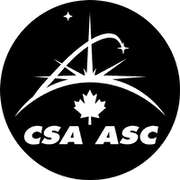






























This goes
to Lunar orbit
Orion - Artemis 2
Artemis II Orion
Artemis II will be the first crewed mission of NASA’s Orion crew capsule and the vehicle's third flight.
The crew assignments are: Commander Reid Wiseman, Pilot Victor Glover, Mission Specialist 1 Christina Hammock Koch, and Mission Specialist 2 Jeremy Hansen.
The approximately 10-day Artemis II flight test will launch on the agency’s powerful Space Launch System rocket, prove the Orion spacecraft’s life-support systems, and validate the capabilities and techniques needed for humans to live and work in deep space.
The flight, set to build upon the successful uncrewed Artemis I mission completed in December, will set the stage for the first woman and first person of color on the Moon through the Artemis program, paving the way for future for long-term human exploration missions to the Moon, and eventually Mars.
“For the first time in more than 50 years, these individuals – the Artemis II crew – will be the first humans to fly to the vicinity of the Moon. Among the crew are the first woman, first person of color, and first Canadian on a lunar mission, and all four astronauts will represent the best of humanity as they explore for the benefit of all,” said NASA Johnson Director Vanessa Wyche.
Meet the Astronauts
This will be Wiseman’s second trip into space, serving previously as a flight engineer aboard the International Station for Expedition 41 from May through November 2014. Wiseman has logged more than 165 days in space, including almost 13 hours as lead spacewalker during two trips outside the orbital complex. Prior to his assignment, Wiseman served as chief of the Astronaut Office from December 2020 until November 2022.
The mission will be Glover’s second spaceflight, serving previously as pilot on NASA’s SpaceX Crew-1, which landed May 2, 2021, after 168 days in space. As a flight engineer aboard the space station for Expedition 64, he contributed to scientific investigations, technology demonstrations, and participated in four spacewalks.
Koch also will be making her second flight into space on the Artemis II mission. She served as flight engineer aboard the space station for Expedition 59, 60, and 61. Koch set a record for the longest single spaceflight by a woman with a total of 328 days in space and participated in the first all-female spacewalks.
Representing Canada, Hansen is making his first flight to space. A colonel in the Canadian Armed Forces and former fighter pilot, Hansen holds a Bachelor of Science in space science from Royal Military College of Canada in Kingston, Ontario, and a Master of Science in physics from the same institution in 2000, with a research focus on Wide Field of View Satellite Tracking. He was one of two recruits selected by CSA in May 2009 through the third Canadian Astronaut Recruitment Campaign and has served as Capcom in NASA's Mission Control Center at Johnson and, in 2017, became the first Canadian to be entrusted with leading a NASA astronaut class, leading the training of astronaut candidates from the United States and Canada.
Orion details
Orion (officially Orion Multi-Purpose Crew Vehicle or Orion MPCV) is a class of partially reusable crewed deep space-capable spacecraft for use in NASA's Artemis program to return humans to the moon.
The spacecraft consists of a Crew Module (CM) space capsule designed by Lockheed Martin and the European Service Module (ESM) manufactured by Airbus Defense and Space. Capable of supporting a crew of four beyond low Earth orbit, Orion can last up to 21 days undocked and up to six months docked.
A single AJ10 engine provides the spacecraft's primary propulsion, while eight R-4D-11 engines, and six pods of custom reaction control system engines developed by Airbus, provide the spacecraft's secondary propulsion.
Although compatible with other launch vehicles, Orion is primarily intended to launch atop a Space Launch System (SLS) rocket, with a tower launch escape system.
Orion was originally conceived in the early 2000s by Lockheed Martin as a proposal for the Crew Exploration Vehicle (CEV) to be used in NASA's Constellation program before its cancellation in 2010.
Orion Flight Test 1 or OFT-1 was the first test flight of the crew module portion of the Orion Multi-Purpose Crew Vehicle. Without a crew, it launched on December 5th, 2014, at 7:05 am EST, by a ULA Delta IV Heavy rocket from Space Launch Complex 37B at Cape Canaveral Space Force Station.
The mission was a four-hour, two-orbit test of the Orion crew module featuring a high apogee on the second orbit and concluding with a high-energy reentry at around 8.9 kilometers per second (20,000 mph). This mission design corresponds to the Apollo 4 mission of 1967, which validated the Apollo flight control system and heat shield at re-entry conditions planned for the return from lunar missions.
The Successful Artemis I Mission
NASA’s Orion spacecraft splashed down in the Pacific Ocean, west of Baja California, at 9:40 a.m. PST Sunday after a record-breaking mission, traveling more than 1.4 million miles on a path around the Moon and returning safely to Earth, completing the Artemis I flight test.
Splashdown is the final milestone of the Artemis I mission that began with a successful liftoff of NASA’s Space Launch System (SLS) rocket Nov. 16, from Launch Pad 39B at NASA’s Kennedy Space Center in Florida. Over the course of 25.5 days, NASA tested Orion in the harsh environment of deep space before flying astronauts on Artemis II.
“The splashdown of the Orion spacecraft – which occurred 50 years to the day of the Apollo 17 Moon landing – is the crowning achievement of Artemis I. From the launch of the world’s most powerful rocket to the exceptional journey around the Moon and back to Earth, this flight test is a major step forward in the Artemis Generation of lunar exploration,” said NASA Administrator Bill Nelson.
During the mission, Orion performed two lunar flybys, coming within 80 miles of the lunar surface. At its farthest distance during the mission, Orion traveled nearly 270,000 miles from our home planet, more than 1,000 times farther than where the International Space Station orbits Earth, to intentionally stress systems before flying crew.
All captions and data courtesy of NASA

On this
rocket
SLS (Block 1)
After the successful Artemis I mission, the next step is to start sending people on missions to the Moon and beyond on the world's most powerful rocket.
On its second mission, Artemis II, SLS will send Orion and its crew farther than humans have traveled before––around 250,000 miles from Earth, 10,000 miles beyond the Moon. Like Artemis I, the second flight will use a Block I version of NASA's SLS rocket.
On the third flight, Artemis III, SLS will send Orion astronauts on a mission that will land on the Moon. Americans along with their international and commercial partners will use the Moon as a proving ground to test technologies and prepare for missions to Mars.
To land larger cargo on the Moon and to send people to Mars, SLS will evolve to a configuration called Block 1B. This rocket configuration will use a powerful Exploration Upper stage instead of the interim cryogenic propulsion stage and be capable of sending 42 metric tons (92,500 pounds) to the Moon.
One feature that will help the rocket haul payload to space along with Orion is the universal stage adapter. It acts like the trunk in a large van and allows SLS to send both astronauts and large cargo that take up more than 10,000 cubic feet and weigh up to 10,000 pounds.
Carrying only cargo, the rocket’s 8.4-meter shroud could hold three fully loaded school buses or the equivalent of 30 Mars Curiosity rovers that are about the size of a small car. Large parts of NASA’s Gateway can be launched along with the Orion spacecraft or on separate flights.
The ultimate evolution of SLS is the Block 2 rocket that can carry either crew and cargo or just cargo needed for Mars exploration or for planetary missions headed to the outer solar system. The Block 2 launch vehicle reaches orbit with the same core stage used by smaller versions of the rocket, but more powerful boosters will increase thrust to 11.9 million pounds. This will allow it to launch up to more than 46 metric tons (101,000 pounds) to deep space.
Artemis I, the first integrated flight of SLS and Orion, used the Block 1 configuration, which stands 322 feet and weighs 5.75 million lbs. During launch and ascent, SLS produced 8.8 million lbs. of maximum thrust, 15 percent more thrust than the Saturn V rocket.
For Artemis I, Block 1 launched an uncrewed Orion spacecraft to an orbit 40,000 miles beyond the Moon, or 280,000 miles from Earth. This mission demonstrated the integrated system performance of SLS, Orion, and Exploration Ground Systems prior to a crewed flight.
Core Stage
The Boeing Company, in Huntsville, Alabama, builds the SLS core stages, including the avionics that controls the vehicle during flight. Towering more than 212 feet with a diameter of 27.6 feet, the core stage stores 730,000 gallons of super-cooled liquid hydrogen and liquid oxygen that fuel the RS-25 engines. Core stages are built at NASA’s Michoud Assembly Facility in New Orleans using state-of-the-art manufacturing equipment, including a friction stir welding tool that is the largest of its kind in the world. The core stage is the newest part of the rocket, and it successfully completed its one and only planned Green Run test series at NASA’s Stennis Space Center in Mississippi. With the Artemis I core stage complete, Boeing is building stages for the next few Artemis missions. The SLS avionics computer software is developed at NASA’s Marshall Space Flight Center in Huntsville.
RS-25 Engines
Propulsion for the SLS core stage will be provided by four RS-25 engines. Aerojet Rocketdyne of Sacramento, California, is upgrading an inventory of 16 RS-25 shuttle engines to SLS performance requirements, including a new engine controller, nozzle insulation, and required operation at 512,000 lbs. of thrust. During the flight, the four engines provide about 2 million lbs. of thrust. The SLS Program and its industry partners tested the four RS-25 engines and the entire core stage in a “Green Run” test campaign that culminated in a successful, full-duration, 500-second hot-firing at Stennis. Aerojet Rocketdyne has tested new controllers for the engines and has processed engines for follow-on flights after Artemis I. In addition, Aerojet Rocketdyne has restarted production of new RS-25 engines and is developing and testing new, advanced components to make the engines more affordable.
Boosters
Two shuttle-derived solid rocket boosters provide more than 75 percent of the vehicle’s thrust during the first two minutes of flight. The prime contractor for the boosters, Northrop Grumman’s Northern Utah team, has modified the original shuttle’s configuration of four propellant segments to a five-segment version. The design also includes new avionics, propellant grain design, and case insulation, and eliminates the recovery parachutes.
In addition to the boosters for Artemis I, Northrop Grumman has completed motor segments for Artemis II and is working on boosters for missions beyond Artemis II. Trains transport booster segments from Utah to NASA’s Kennedy Space Center in Florida where they are stacked with forward and aft assemblies to create the largest, most powerful boosters ever built for spaceflight. The boosters’ avionics systems are tested at Kennedy and Marshall.
Integrated Spacecraft
The initial capability to propel Orion out of Earth’s orbit for Block 1 will come from the ICPS, based on the Delta Cryogenic Second Stage used successfully on United Launch Alliance’s Delta IV family of rockets. It uses one RL10 engine made by Aerojet Rocketdyne.The engine is powered by liquid hydrogen and liquid oxygen and generates 24,750 lbs. of thrust. With two upper stages complete, United Launch Alliance is manufacturing the Artemis III ICPS.Teledyne Brown Engineering of Huntsville builds the launch vehicle stage adapter that partially encloses the ICPS and connects it to the core stage. The Orion stage adapter (OSA) will connect Orion to the ICPS on the SLS Block 1 vehicle. The OSA can accommodate several CubeSat payloads in 6 Unit or 12 Unit sizes, depending on mission parameters. For Artemis I, the OSA carries several 6U-sized CubeSats to deep space for various science and technology demonstration missions.
The SLS Team
SLS is America’s rocket with more than 1,100 companies from across the U.S. and at every NASA center supporting the development of the world’s most powerful rocket. The SLS Program, managed by Marshall, works closely with the Orion Program, managed by NASA’s Johnson Space Center, and the Exploration Ground Systems Program, managed at Kennedy. All three programs are managed by the Exploration Systems Development Division within the Exploration Systems Development Mission Directorate at NASA Headquarters in Washington, D.C.
All captions and data courtesy of NASA
Image: Erik Kuna for Supercluster

From this
launch site
LC-39B - Kennedy Space Center, Florida
Launch Complex 39B (LC-39B) is a significant launch site located at NASA's Kennedy Space Center in Florida. Constructed in the late 1960s alongside LC-39A, it was originally designed to support the Apollo program. LC-39B played a key role during the Apollo era, including the launch of Apollo 10 on May 18, 1969, which was a crucial mission before the historic Apollo 11 Moon landing. The pad was later adapted for the Space Shuttle program, hosting several Shuttle launches over its operational life.
Following the end of the Shuttle program, LC-39B underwent extensive renovations to prepare it for future missions. NASA focused on upgrading the site to support the Space Launch System (SLS), a new heavy-lift rocket designed for deep space exploration as part of the Artemis program. This program aims to return humans to the Moon and eventually send astronauts to Mars. The upgrades included installing a new mobile launcher and enhancing infrastructure to accommodate the SLS and its associated systems.
LC-39B garnered significant attention with its role in NASA’s Artemis missions. It was the launch site for Artemis I, an uncrewed test flight of the Space Launch System and the Orion spacecraft, which successfully launched on November 16, 2021. This mission was a critical step towards returning humans to the Moon and demonstrated the capabilities of both the SLS rocket and the Orion spacecraft.
Today, LC-39B continues to be a vital component of NASA’s plans for future exploration. It is set to support upcoming Artemis missions and other deep space endeavors, serving as a launch site for both crewed and uncrewed missions aimed at exploring beyond low Earth orbit. The complex’s modern upgrades and its role in advancing human space exploration highlight its ongoing importance in NASA’s ambitious goals for space travel.
Photo courtesy of Erik Kuna for Supercluster

Orion will
fly here
Moon
The flight profile for Artemis II is called a hybrid free return trajectory.
The Orion spacecraft will perform multiple maneuvers to raise its orbit around Earth and eventually place the crew on a lunar free return trajectory in which Earth’s gravity will naturally pull Orion back home after flying by the Moon.
The initial launch will be similar to Artemis I as SLS lofts Orion into space, and then jettisons the boosters, service module panels, and launch abort system, before the core stage engines shut down and the core stage separates from the upper stage and the spacecraft. With crew aboard this mission, Orion and the upper stage, called the interim cryogenic propulsion stage (ICPS), will then orbit Earth twice to ensure Orion’s systems are working as expected while still close to home. The spacecraft will first reach an initial orbit, flying in the shape of an ellipse, at an altitude of about 115 by 1,800 miles.
The orbit will last a little over 90 minutes and will include the first firing of the ICPS to maintain Orion’s path. After the first orbit, the ICPS will raise Orion to a high-Earth orbit. This maneuver will enable the spacecraft to build up enough speed for the eventual push toward the Moon. The second, larger orbit will take approximately 23.5 hours with Orion flying in an ellipse between about 115 and 46,000 miles above Earth. For perspective, the International Space Station flies a nearly circular Earth orbit about 250 miles above our planet.
After the burn to enter high-Earth orbit, Orion will separate from the ICPS. The expended stage will have one final use before it is disposed through Earth’s atmosphere—the crew will use it as a target for a proximity operations demonstration. During the demonstration, mission controllers at NASA’s Johnson Space Center in Houston will monitor Orion as the astronauts transition the spacecraft to manual mode and pilot Orion’s flight path and orientation. The crew will use Orion’s onboard cameras and the view from the spacecraft’s windows to line up with the ICPS as they approach and back away from the stage to assess Orion’s handling qualities and related hardware and software. This demonstration will provide performance data and operational experience that cannot be readily gained on the ground in preparation for critical rendezvous, proximity operations and docking, as well as undocking operations in lunar orbit beginning on Artemis III.
Checking Critical Systems
Following the proximity operations demonstration, the crew will turn control of Orion back to mission controllers at Johnson and spend the remainder of the orbit verifying spacecraft system performance in the space environment. They will remove the Orion Crew Survival System suit they wear for launch and spend the remainder of the in-space mission in plain clothes, until they don their suits again to prepare for reentry into Earth’s atmosphere and recovery from the ocean.
While still close to Earth, the crew will assess the performance of the life support systems necessary to generate breathable air and remove the carbon dioxide and water vapor produced when the astronauts breathe, talk, or exercise. The long orbital period around Earth provides an opportunity to test the systems during exercise periods, where the crew’s metabolic rate is the highest, and a sleep period, where the crew’s metabolic rate is the lowest. A change between the suit mode and cabin mode in the life support system, as well as performance of the system during exercise and sleep periods, will confirm the full range of life support system capabilities and ensure readiness for the lunar flyby portion of the mission.
Orion will also checkout the communication and navigation systems to confirm they are ready for the trip to the Moon. While still in the elliptical orbit around Earth, Orion will briefly fly beyond the range of GPS satellites and the Tracking and Data Relay Satellites of NASA’s Near Space Network to allow an early checkout of agency’s Deep Space Network communication and navigation capabilities. When Orion travels out to and around the Moon, mission control will depend on the Deep Space Network to communicate with the astronauts, send imagery to Earth, and command the spacecraft.
After completing checkout procedures, Orion will perform the next propulsion move, called the translunar injection (TLI) burn. With the ICPS having done most of the work to put Orion into a high-Earth orbit, the service module will provide the last push needed to put Orion on a path toward the Moon. The TLI burn will send crew on an outbound trip of about four days and around the backside of the moon where they will ultimately create a figure eight extending over 230,000 miles from Earth before Orion returns home.
To the Moon and “Free” ride home
On the remainder of the trip, astronauts will continue to evaluate the spacecraft’s systems, including demonstrating Earth departure and return operations, practicing emergency procedures, and testing the radiation shelter, among other activities.
The Artemis II crew will travel 6,400 miles beyond the far side of the Moon. From this vantage point, they will be able to see the Earth and the Moon from Orion’s windows, with the Moon close in the foreground and the Earth nearly a quarter-million miles in the background.
With a return trip of about four days, the mission is expected to last just over 10 days. Instead of requiring propulsion on the return, this fuel-efficient trajectory harnesses the Earth-Moon gravity field, ensuring that—after its trip around the far side of the Moon—Orion will be pulled back naturally by Earth’s gravity for the free return portion of the mission.
Credit: NASA

Artemis Photo
Artemis 1 Print
High-quality prints selected from the Supercluster team’s spaceflight photography are now available in our shop.
Our prints are produced on 10 mil (0.25 mm) thick, slightly glossy, fingerprint-resistant photo paper sourced from Japan.
Begin your collection with a striking image: Erik Kuna’s fiery capture of the ignition during NASA's very first SLS rocket launch.

Here's where to view Artemis-II
Viewing Sites
- Alan Shepard Park
- A. Max Brewer Parkway Bridge
- Saturn V Building / Banana Creek
- Cherie Down Park
- Cocoa Beach Pier
- Jetty Park
- Kennedy Space Center Visitor Complex
- Lori Wilson Park
- Playalinda Beach
- Rotary Riverfront Park
- Sand Point Park
- Sidney Fischer Park
- Space View Park
GET THE SUPERCLUSTER APP
THE SUPERCLUSTER PODCAST
A podcast exploring the amazing milestones that changed space history, the wildest ideas that drive our future, and every development in this new Golden Age of Space.
Donate to support
Your support makes the Astronaut Database and Launch Tracker possible, and keeps all Supercluster content free.
SupportCOPYRIGHT 2021 SUPERCLUSTER LLC









